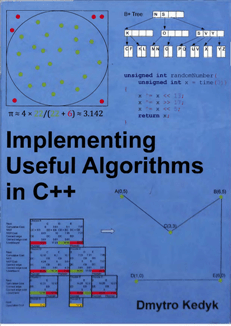

Most ebook files are in PDF format, so you can easily read them using various software such as Foxit Reader or directly on the Google Chrome browser.
Some ebook files are released by publishers in other formats such as .awz, .mobi, .epub, .fb2, etc. You may need to install specific software to read these formats on mobile/PC, such as Calibre.
Please read the tutorial at this link: https://ebookbell.com/faq
We offer FREE conversion to the popular formats you request; however, this may take some time. Therefore, right after payment, please email us, and we will try to provide the service as quickly as possible.
For some exceptional file formats or broken links (if any), please refrain from opening any disputes. Instead, email us first, and we will try to assist within a maximum of 6 hours.
EbookBell Team

4.3
58 reviewsProgrammers use algorithms and data structures all the time, usually through numerous available APIs. Ideally an algorithm is correct, easy to understand, applicable to many problems, efficient, and free of intellectual property claims. This book covers algorithms and data structures learned in an algorithms class and many that aren't, including statistical algorithms, external memory algorithms, numerical methods, optimization, string algorithms, and data compression.
About a fourth of the book is devoted to machine learning. There is much more theory than in the rest of the book because in machine learning relevant theory is more practical than algorithms. New learning algorithms are proposed often, and it's easy to get lost without understanding how learning actually works. In particular, getting comfortable with the concept of estimation error substantially improves the ability to reason about statistical algorithms.
Another fourth is about numerical algorithms. Separate chapters cover matrix algorithms (such as eigenvalue calculation for spectral clustering), working with functions (integration, root finding, etc.), and optimization (both continuous and convex).